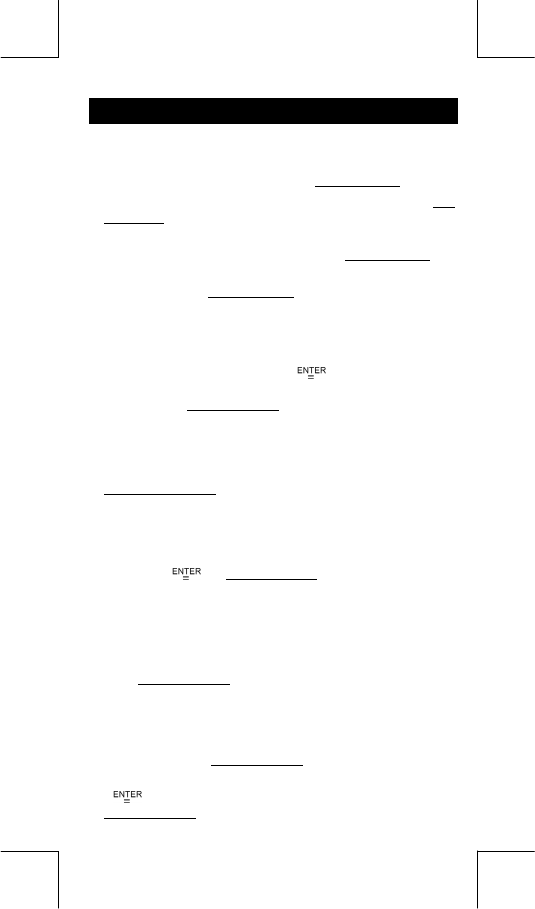
E – 11
File name : CBM_SR285,A_HDBSR285T19_English.doc
version : 2010/04/26
Mode 0 - MAIN
Arithmetic Calculations
z
Arithmetic operations are performed by pressing the keys in the
same sequence as in the expression. See Example 6.
z
For negative values, press [ (
−
) ] before entering the value. See
Example 7.
z
For mixed arithmetic operations, multiplication and division are
given priority over addition and subtraction. See Example 8.
z
Results greater than 10
10
or less than 10
-9
are displayed in
exponential form. See Example 9.
Display formats
z
Decimal places formats are selected by pressing [ 2nd ] [ TAB ] to
display the menu. To set decimal places to
n
(
F0123456789
),
enter a
n
value directly or press [ ] key while the item is
underlined. (The default setting is floating point notation
F
and the
n
value is
•
). See Example 10.
z
Even if the number of decimal places is specified, internal
calculation for a mantissa is performed up to 24 digits, and the
display value is stored in 10 digits. To round off those values to
the specified number of decimal places, press [ 2nd ] [ RND ].
See Example 11~12.
z
Number display formats are selected by pressing [ 2nd ]
[ SCI/ENG ] to display the menu. The items on the menu are
FLO
(for floating point),
SCI
( for scientific), and
ENG
(for engineering).
Press [
] or [
] until the desired formats is underlined, and
then press [
]. See Example 13.
(Note) : The engineering format is similar to the scientific format,
except the mantissa can have up to three digits left of
the decimal, instead of only one, and the exponent is
always a multiple of three. It is useful for engineers to
convert units based on multiples of 10
3
.
z
You can enter a number in mantissa and exponent form by [ EXP ]
key. See Example 14.
Parentheses Calculation
z
Operations inside parentheses are always executed first. The
calculator can use up to 13 levels of consecutive parentheses in a
single calculation. See Example 15.
z
Closed parentheses occurring immediately before operation of the
[
] key may be omitted, no matter how many are required.
See Example 16.


















